The Exposure Triangle: A Beginner’s Guide
![]()
How important is exposure in photography? What are the components of exposure? What is the “Exposure Triangle”? These are the questions I will attempt to answer in this introductory article about ISO, aperture, and shutter speed — the components of achieving a properly exposed photo.
Table of Contents
What is Exposure in Photography?
In the simplest of terms, exposure for photographers refers to how an image is recorded by a camera sensor (or film) and how much light is captured. Basically, it determines what the image you capture will look like.
Understanding the Exposure Triangle
The relationship between ISO, aperture, and shutter speed is popularly known as the “exposure triangle”. If you know how to control or adjust these elements, taking well-exposed photos will not be a problem for you. Let us look at each element closely and understand how they can help you achieve the right exposure.
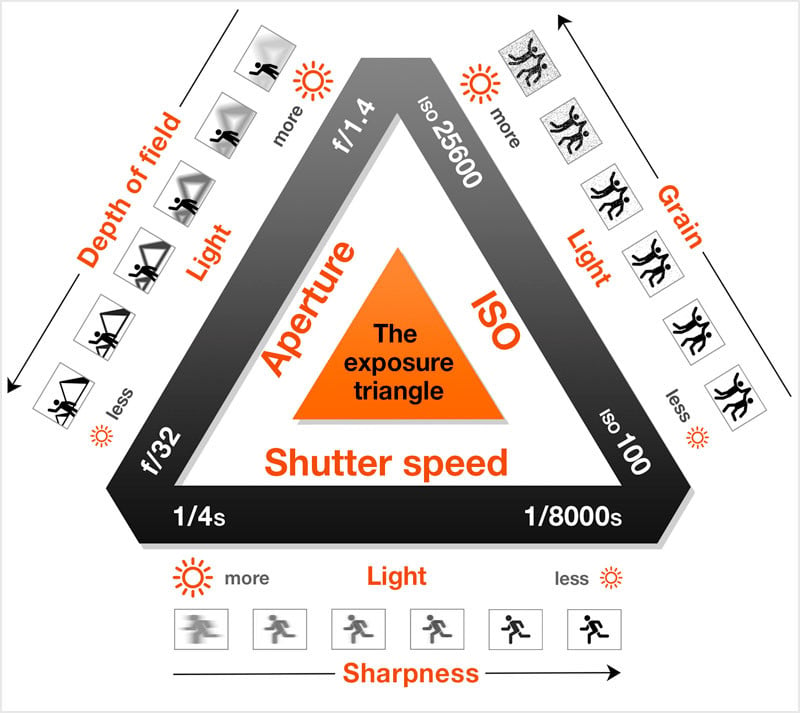
ISO
The ISO refers to ratings that define the sensitivity level of your camera to light (a more technical exploration can be found here). ISO value is determined by numbers: the lower the number, the lower the sensitivity to light. Higher values mean it is more sensitive to light. Depending on your camera, the lowest value is 50, 100, or 200.
Photographers need to know and understand proper ISO settings. For example, if you want more saturation, less noise, and more details, go for ISO 100. If you want less saturation and details, go for a higher number, like an ISO of 400. Each time you increase the ISO to a level, the sensor’s sensitivity is doubled (ISO 100 to ISO 200, ISO 200 to ISO 400, and so on). This means that you need half the amount of light hitting your sensor for the same exposure. Thus, exposure is increased by a factor of 2.
In the same manner, if you want to take a photo of the early evening skyline, you will need to consider that it is already dark, so you will need a high shutter speed to properly capture the image. What you can do is increase the level of sensitivity to 3200 so that exposure is increased by five (100-200-400-800-1600-3200).
Once you learn how to take advantage of the ISO, you can experiment with the images you want to capture. You can create different ways of presenting your subject. In addition, you will also be more comfortable shooting in different lighting conditions.
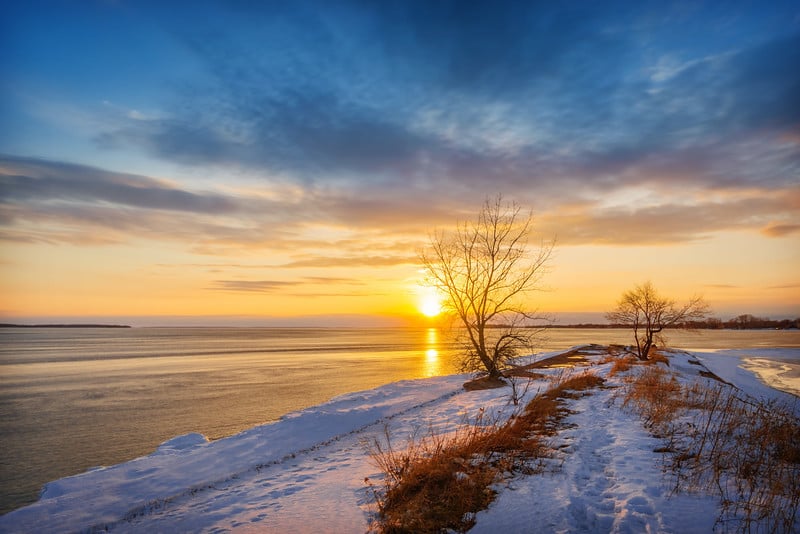
Aperture
If the ISO is related to light sensitivity, the aperture is all about controlling the amount of light that gets to the digital sensor of your camera. The aperture is the opening found in your camera lens. If you look closely at the camera lens, you will find round or ring-like metal blades. These blades open and close: it opens to widen the opening, and it closes if you want the opening to narrow down.
As such, controlling the aperture or choosing to use the Aperture Priority mode allows you to adjust the amount of light that can get into your camera so that it can either open (widen) or close (narrow). The aperture setting is determined by several f-stop values. The usual numerical values for the f-stop are 1.4, 1.8, 2.0, 2.8, 3.6, 4, 5.6, 8, 11, 16 and 22.
When you adjust the aperture, note that as the numerical value increases, the aperture becomes smaller and the amount of light that gets through decreases. Also, the smaller the aperture size, the wider your depth of field — a deeper portion of your photo will be in focus. For shallow depth of field photos, use a larger aperture size (i.e. a smaller numerical f-stop value).

So, if you need to remember one thing, it is this: when you adjust the aperture by just one stop, you either halve or double the amount of light that goes through your camera lens. What is important, though, is that you keep practicing until you familiarize yourself with the different f-stop values, and until you produce the image/s you want.
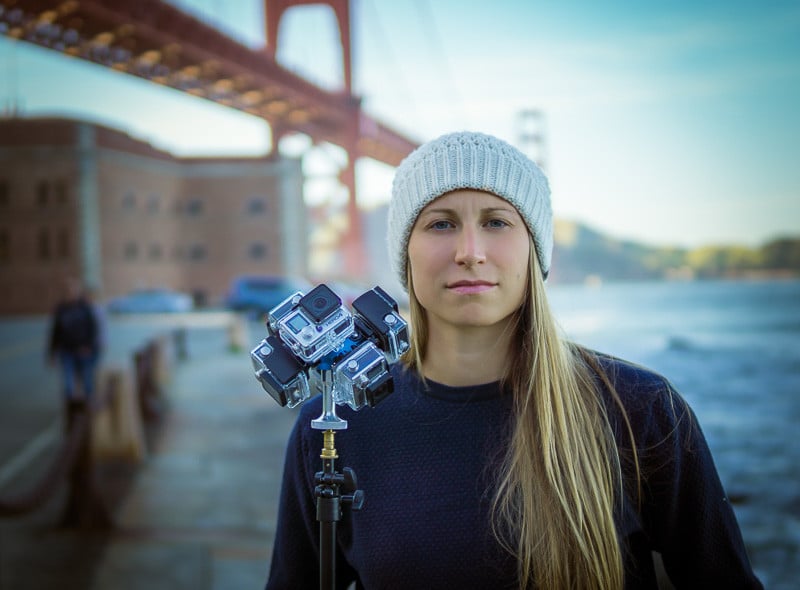
Shutter Speed
The shutter of your camera is the one you hear clicking or snapping. This is the sound that tells you that a photo has been captured.
For photographers, though, what is more important is the shutter speed. Every time you press the shutter button, a door that opens and closes is found in front of your camera’s sensor. This is the shutter mechanism that determines the length of time the sensor is exposed to light. In other words, while aperture controls how much light reaches your sensor, and shutter speed controls how long light reaches your sensor.
The shutter speed is measured in fractions of a second, e.g. 1/100s. So, if you use the example given, 1/100s, what this means is that your camera sensor is exposed to light for only one-hundredth of a second. If you need to remember one thing about shutter speed, it is that when the shutter speed number is a smaller fraction, the faster the shutter opens and closes.
If you want to control the shutter speed manually, go for Shutter Priority (S or Tv on your camera) or manual mode.
When you are confident in using the shutter speed, you can play around with your photos and make them come out more creatively (e.g. slow shutter speeds allow for more motion blur when shooting action). Of course, practice makes perfect. So, don’t forget to do just that.
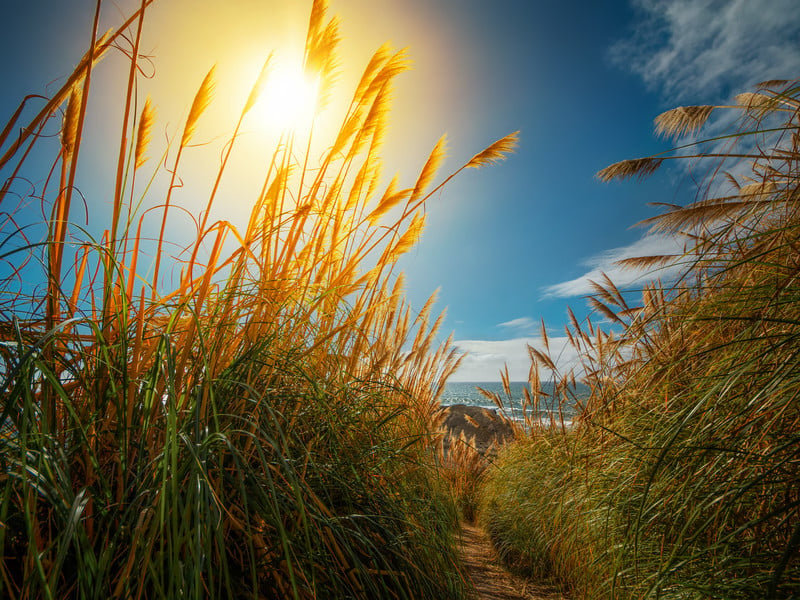
Equivalent Exposures
Combining the ISO, aperture, and shutter speed results in an equivalent exposure value for a particular setting. If any one of these elements is adjusted, the resulting image will not be the same. If you increase the f-stop to decrease the amount of light getting to the sensor, you will also need to adjust the shutter speed and the ISO for an equivalent exposure; otherwise, your image might come out blurry or too bright; overexposed or underexposed.
The unit of measurement used in photography to quantify exposure values is the stop (with full stops also known as EV, or exposure value, units). Each added stop doubles the amount of light in an exposure, and each subtracted stop halves the amount of light.
Here is a handy chart that shows full-stop intervals of aperture, ISO, and shutter speed:
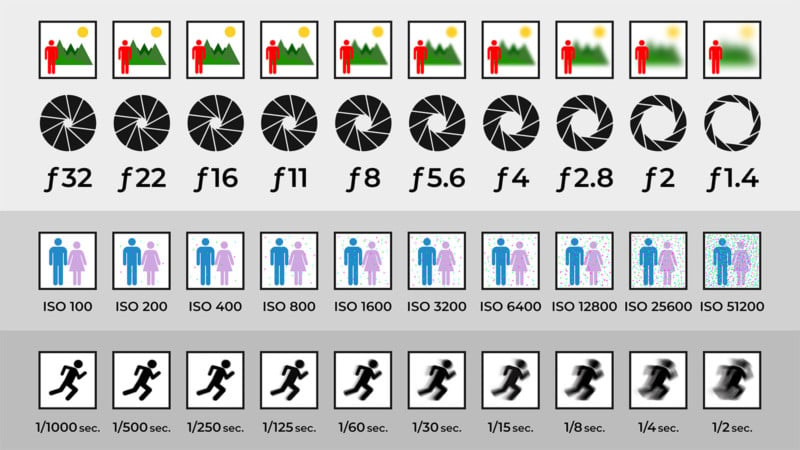
If you increase or decrease any component of the exposure triangle, you will need to compensate with an equivalent number of stops in one or both of the other components in order to create an equivalent exposure, or photo created with the same amount of light.
Different combinations with equivalent exposures, however, will produce different amounts of depth of field, motion blur, and grain/noise.
Here’s another handy chart that breaks down when you may want to choose aperture, ISO, and shutter speed depending on what you are shooting and what look you are going after:
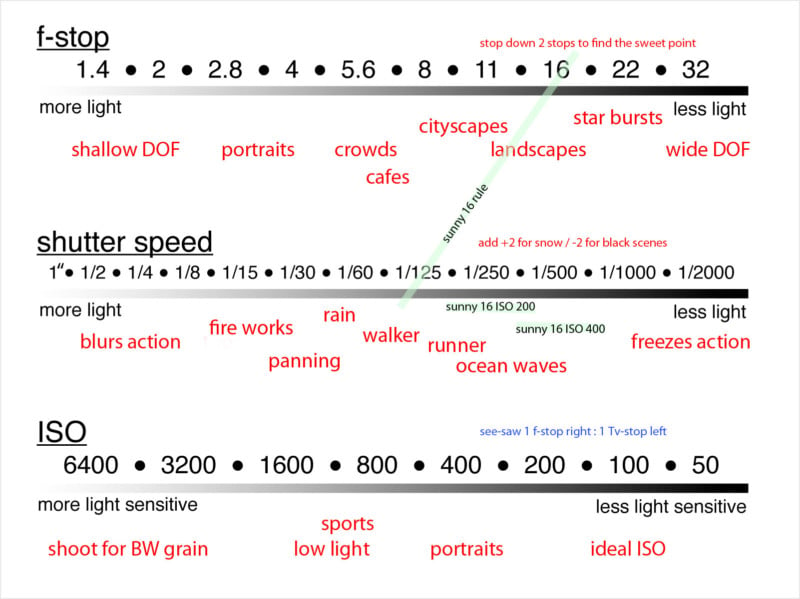
This is just a simple introduction to the three elements that make up the exposure triangle. Hopefully, it was helpful to you if you’re just starting out in your journey in photography.
About the author: Viktor Elizarov is a travel photographer based in Montreal, Canada. He’s also the man behind PhotoTraces, a travel photography blog and community of over 60,000 photographers. Visit Tutorials section of his blog for free tutorials and free Lightroom presets. This article was also published here.